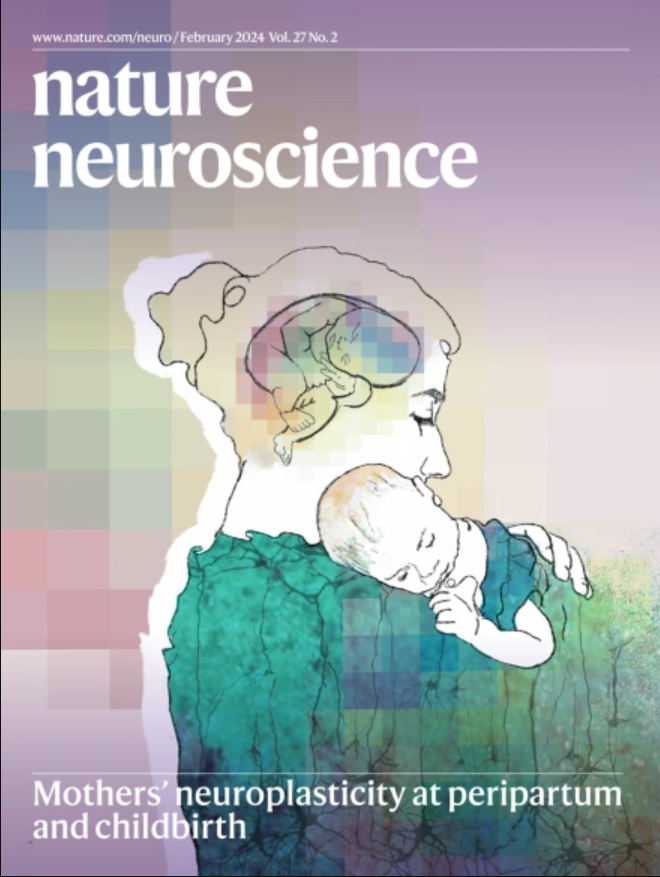Response of spatially defined microglia states with distinct chromatin accessibility in a mouse model of Alzheimer’s disease
IF 20
1区 医学
Q1 NEUROSCIENCES
引用次数: 0
Abstract
Microglial spatial heterogeneity remains a crucial yet not fully answered question in the context of potential cell-directed therapies for Alzheimer’s disease (AD). There is an unclear understanding of the dynamics of distinct microglia states adjacent to or far from amyloid-beta (Aβ) plaques and their contributions to neurodegenerative diseases. Here we combine multicolor fluorescence cell fate mapping, single-cell transcriptional analysis, epigenetic profiling, immunohistochemistry and computational modeling to comprehensively characterize the relation of plaque-associated microglia (PAM) and non-plaque-associated microglia (non-PAM) in a mouse model of AD. We show that non-PAM are a distinct and highly dynamic microglial state, transitioning to PAM after Aβ plaque deposition in female mice. Non-PAM modulate the cell population expansion in response to amyloid deposition and rapidly respond to environmental cues. Indeed, Csf1 signaling modulates non-PAM-to-PAM transition during disease progression. Our data suggest that microglia states and their dynamics between each other can have distinct contributions to disease, and they may be targeted for the treatment of AD. The dynamics of microglia states adjacent to or far from amyloid-beta plaques are unclear. Here the authors show that non-plaque-associated microglia modulate the cell population expansion in response to amyloid deposition, and Csf1 signaling regulates their transition to the amyloid-associated state.


阿尔茨海默病小鼠模型中具有不同染色质可及性的空间定义小胶质细胞状态的反应
在阿尔茨海默病(AD)的潜在细胞导向治疗中,小胶质细胞的空间异质性仍然是一个关键但尚未完全回答的问题。淀粉样蛋白- β (Aβ)斑块附近或远离斑块的不同小胶质细胞状态的动力学及其对神经退行性疾病的影响尚不清楚。本研究结合多色荧光细胞命运图谱、单细胞转录分析、表观遗传谱、免疫组织化学和计算模型,全面表征斑块相关小胶质细胞(PAM)和非斑块相关小胶质细胞(non-斑块相关小胶质细胞)在AD小鼠模型中的关系。我们发现非PAM是一种独特的、高度动态的小胶质细胞状态,在雌性小鼠a β斑块沉积后过渡到PAM。非pam在淀粉样蛋白沉积时调节细胞群的扩张,并对环境线索做出快速反应。事实上,Csf1信号在疾病进展过程中调节非pam到pam的转变。我们的数据表明,小胶质细胞状态及其相互之间的动态可能对疾病有不同的贡献,它们可能是治疗AD的靶点。
本文章由计算机程序翻译,如有差异,请以英文原文为准。
求助全文
约1分钟内获得全文
求助全文
来源期刊

Nature neuroscience
医学-神经科学
CiteScore
38.60
自引率
1.20%
发文量
212
审稿时长
1 months
期刊介绍:
Nature Neuroscience, a multidisciplinary journal, publishes papers of the utmost quality and significance across all realms of neuroscience. The editors welcome contributions spanning molecular, cellular, systems, and cognitive neuroscience, along with psychophysics, computational modeling, and nervous system disorders. While no area is off-limits, studies offering fundamental insights into nervous system function receive priority.
The journal offers high visibility to both readers and authors, fostering interdisciplinary communication and accessibility to a broad audience. It maintains high standards of copy editing and production, rigorous peer review, rapid publication, and operates independently from academic societies and other vested interests.
In addition to primary research, Nature Neuroscience features news and views, reviews, editorials, commentaries, perspectives, book reviews, and correspondence, aiming to serve as the voice of the global neuroscience community.
 求助内容:
求助内容: 应助结果提醒方式:
应助结果提醒方式:


